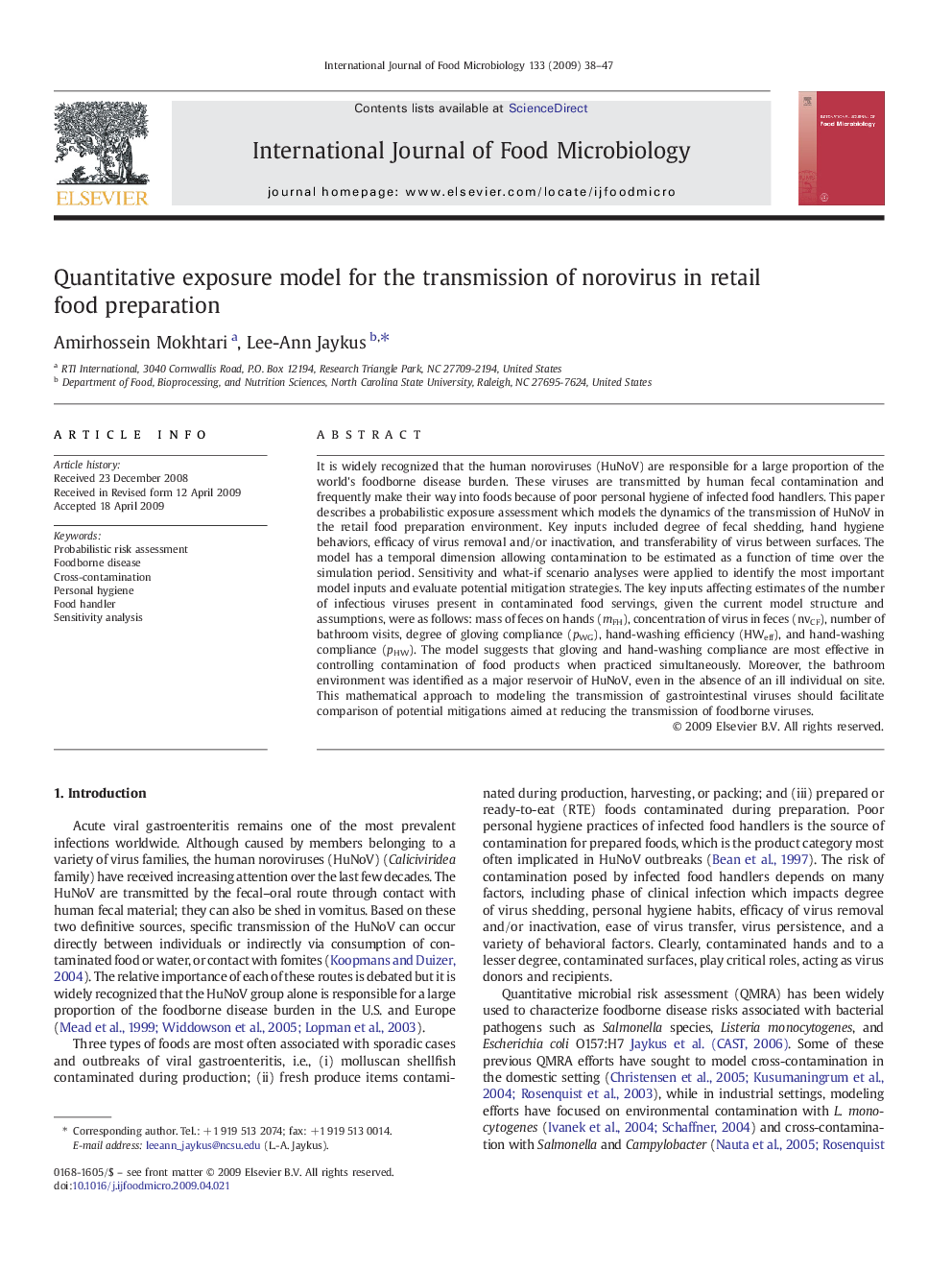| کد مقاله | کد نشریه | سال انتشار | مقاله انگلیسی | نسخه تمام متن |
|---|---|---|---|---|
| 4368627 | 1616704 | 2009 | 10 صفحه PDF | دانلود رایگان |

It is widely recognized that the human noroviruses (HuNoV) are responsible for a large proportion of the world's foodborne disease burden. These viruses are transmitted by human fecal contamination and frequently make their way into foods because of poor personal hygiene of infected food handlers. This paper describes a probabilistic exposure assessment which models the dynamics of the transmission of HuNoV in the retail food preparation environment. Key inputs included degree of fecal shedding, hand hygiene behaviors, efficacy of virus removal and/or inactivation, and transferability of virus between surfaces. The model has a temporal dimension allowing contamination to be estimated as a function of time over the simulation period. Sensitivity and what-if scenario analyses were applied to identify the most important model inputs and evaluate potential mitigation strategies. The key inputs affecting estimates of the number of infectious viruses present in contaminated food servings, given the current model structure and assumptions, were as follows: mass of feces on hands (mFH), concentration of virus in feces (nvCF), number of bathroom visits, degree of gloving compliance (pWG), hand-washing efficiency (HWeff), and hand-washing compliance (pHW). The model suggests that gloving and hand-washing compliance are most effective in controlling contamination of food products when practiced simultaneously. Moreover, the bathroom environment was identified as a major reservoir of HuNoV, even in the absence of an ill individual on site. This mathematical approach to modeling the transmission of gastrointestinal viruses should facilitate comparison of potential mitigations aimed at reducing the transmission of foodborne viruses.
Journal: International Journal of Food Microbiology - Volume 133, Issues 1–2, 31 July 2009, Pages 38–47